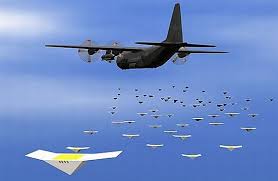
Breaking News
 Christmas Truce of 1914, World War I - For Sharing, For Peace
Christmas Truce of 1914, World War I - For Sharing, For Peace
 The Roots of Collectivist Thinking
The Roots of Collectivist Thinking
 What Would Happen if a Major Bank Collapsed Tomorrow?
What Would Happen if a Major Bank Collapsed Tomorrow?
Top Tech News
 Travel gadget promises to dry and iron your clothes – totally hands-free
Travel gadget promises to dry and iron your clothes – totally hands-free
 Perfect Aircrete, Kitchen Ingredients.
Perfect Aircrete, Kitchen Ingredients.
 Futuristic pixel-raising display lets you feel what's onscreen
Futuristic pixel-raising display lets you feel what's onscreen
 Cutting-Edge Facility Generates Pure Water and Hydrogen Fuel from Seawater for Mere Pennies
Cutting-Edge Facility Generates Pure Water and Hydrogen Fuel from Seawater for Mere Pennies
 This tiny dev board is packed with features for ambitious makers
This tiny dev board is packed with features for ambitious makers
 Scientists Discover Gel to Regrow Tooth Enamel
Scientists Discover Gel to Regrow Tooth Enamel
 Vitamin C and Dandelion Root Killing Cancer Cells -- as Former CDC Director Calls for COVID-19...
Vitamin C and Dandelion Root Killing Cancer Cells -- as Former CDC Director Calls for COVID-19...
 Galactic Brain: US firm plans space-based data centers, power grid to challenge China
Galactic Brain: US firm plans space-based data centers, power grid to challenge China
 A microbial cleanup for glyphosate just earned a patent. Here's why that matters
A microbial cleanup for glyphosate just earned a patent. Here's why that matters
 Japan Breaks Internet Speed Record with 5 Million Times Faster Data Transfer
Japan Breaks Internet Speed Record with 5 Million Times Faster Data Transfer
Air Force Could Test "Flying Aircraft Carriers" as Early as Next Year

The movies were right: Gremlins are real.
Or at least they will be if DARPA -- the U.S. Defense Advanced Research Projects Agency -- has anything to say about it. As we learned this week from our friends at the Navy Times , DARPA is moving ahead on its effort to create a fleet of flying aircraft carriers, which it calls the "Gremlins" program, with demonstration flights scheduled to begin sometime next year.
That's a nice looking aircraft carrier you've got there -- but can it fly? DARPA's can. Image source: Getty Images.
What are Gremlins?
We've been watching this particular hush-hush DARPA project for more than two years now . In a nutshell, it calls for the creation of a new class of small, reusable drones that can be launched midair from a C-130 air transport, disperse to surveil (or, depending on the payload, attack) targets as much as 300 miles away, then return to their flying airbase to dock for refueling and rearming.
Basically, Gremlins will be flying, warlike Roombas, but supersized -- big enough to carry 60 pounds of payload each.
What are Gremlins for ?
According to our friends at Scout Warrior , who've also been following this project closely, one key objective of the Gremlins is to extend the range at which U.S. air forces can operate in a contested environment characterized by an adversary employing A2/AD (anti-access/aerial-denial) tactics. These include the use of cruise missiles to keep aircraft carriers at bay, forcing airplanes to fly long distances to reach their targets, and surface-to-air missiles, which make it hazardous for nonstealthy aircraft to get too close to hostile territory by air.
Obviously, nonstealthy C-130 air transports aren't the best way to penetrate such defenses. After Phase 3 of the Gremlins project is complete, the Air Force will probably want to order up a stealthy "mothership" to take over the role of "flying aircraft carrier." Such a mothership -- perhaps a modified version of Northrop Grumman 's (NYSE: NOC) new B-21 bomber , or the yet-to-be revealed carrier-launched MQ-25 Stingray , could fulfill this role.

 The State's Last Stand
The State's Last Stand


